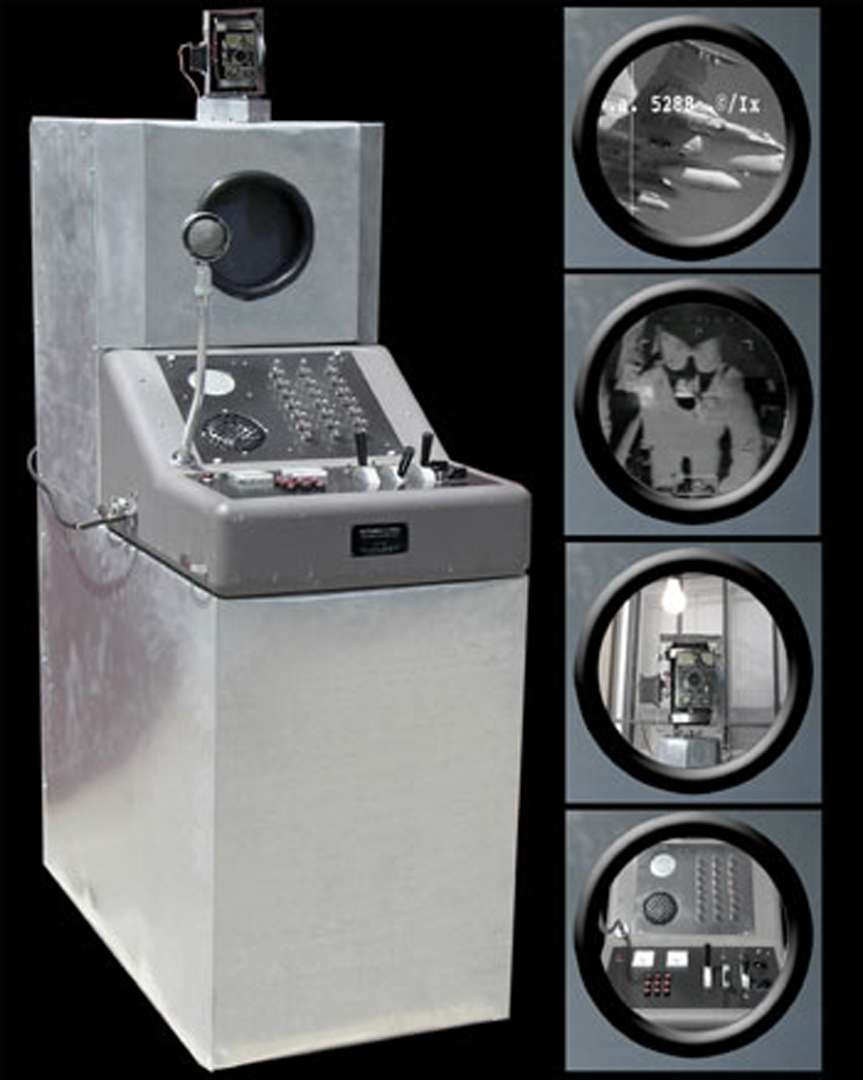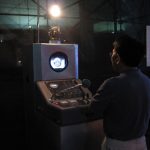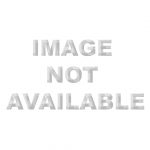Mark-David Hosale, John Thompson: DEFENDEX-ESPGX
Title:
Artist(s) and People Involved:
Exhibiting Artist(s):
-
Mark-David Hosale
-
- York University
- John Thompson
Symposium:
Venue(s):
Creation Year:
Medium:
Artist Statement:
The DEFENDEX-ESPGX is an interactive art object that combines real-time audio and video synthesis processing with physical interaction. The DEFENDEX-ESPGX is designed to simulate the look and feel of 1950’s technology. The content draws on nostalgic reference to bring about implied comparisons between the fearful culture of the Cold War and the culture of fear associated with the current War on Terror.
The DEFENDEX-ESPGX combines real-time audio and video synthesis processing with physical interaction. The DEFENDEX-ESPGX provides a meaningful interface that connects the virtual and physical.
The context of the DEFENDEX-ESPGX, which is that of 1950’s technology, affects the user’s manner of interacting with the medium. The device has a familiarity of a past era in which technologies were seemingly simpler and less abstract. This nostalgia is compelling and draws the user to interact with the device. Users understand how to use the controls even though they are not aware of the virtual system behind the interface. Because of this the continuum between the physical and the virtual becomes transparent.
Unlike conventional technologies where interaction with the device is predictable, the DEFENDEX-ESPGX may usurp the user?s expectations. The device may have compelling nostalgic value, but is interweaved with modern technology. The combination transforms the device to something alien. It leaves its familiar context and becomes foreign.
The message is redefined through this contradictory medium. Parallels between past and current technologies and the eras they represent resolve this contradiction. These parallels are reflected in the content fed back to the user by the virtual system. The content is not meant to be pedantic or convey a particular message, but it draws on nostalgic reference to bring about implied comparisons between the fearful culture of the Cold War and the culture of fear associated with the current War on Terror.
The device also performs surveillance functions. The device grabs control data and content from an external video camera and microphone. The control data is derived from motion detection and audio information, while the content can be displayed with or without processing. Thus the system has two modes of interaction, active and passive. Users who interact with the system directly through the DEFENDEX-ESPGX are active users. The subjects of surveillance within the system are passive users. This means that the system encompasses more than the DEFENDEX-ESPGX itself, but also the entire space in which it is contained (the sensor space). Active users control the surveillance device while being watched at the same time. In order to watch you must be watched.
Physically the DEFENDEX-ESPGX is a stand-alone unit approximately five feet tall with a surveillance camera mounted above and a microphone attached. It has a data feedback panel, three master faders, and several switches and knobs. At head height a monitor provides a visual interface. Speakers are mounted to the sides of the DEFENDEX-ESPGX providing stereo sound. Haptic feedback is provided via vibrating motors located within the DEFENDEX-ESPGX.
The source material includes pre-recorded political, military, and other footage, as well as audio and video streamed from the sensor space. With physical interface components, users navigate through different modes arranged in a non-linear narrative. The DEFENDEX-ESPGX rests in a default mode until engaged by a user. Once engaged, the user can navigate the narrative terrain of the DEFENDEX-ESPGX. The narrative terrain of the DEFENDEX-ESPGX is constructed of several modes that are each one of three types: an action mode, a consequence mode, or a narrative mode. In an action mode the user must complete tasks to move to the next mode. After successful completion of tasks, the user might move to a consequence mode where the ramifications of their actions become apparent. Otherwise, the user is taken to a narrative mode consisting of playback of prerecorded media, which delivers clues as to the secrets behind the DEFENDEX-ESPGX. To be clear, progress through the modes does not occur in a linear fashion. The current mode does not necessarily predetermine the next mode. The route for each user will be unique.








